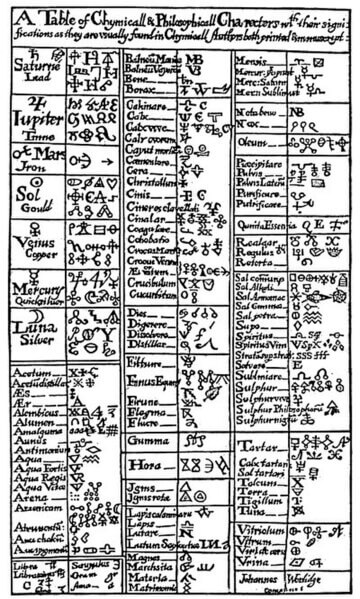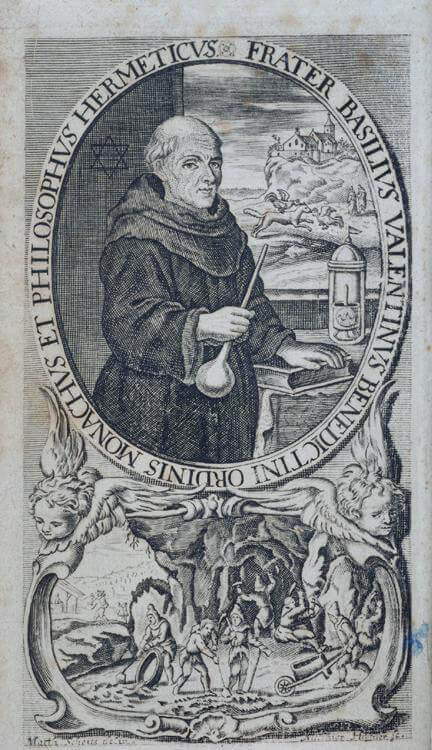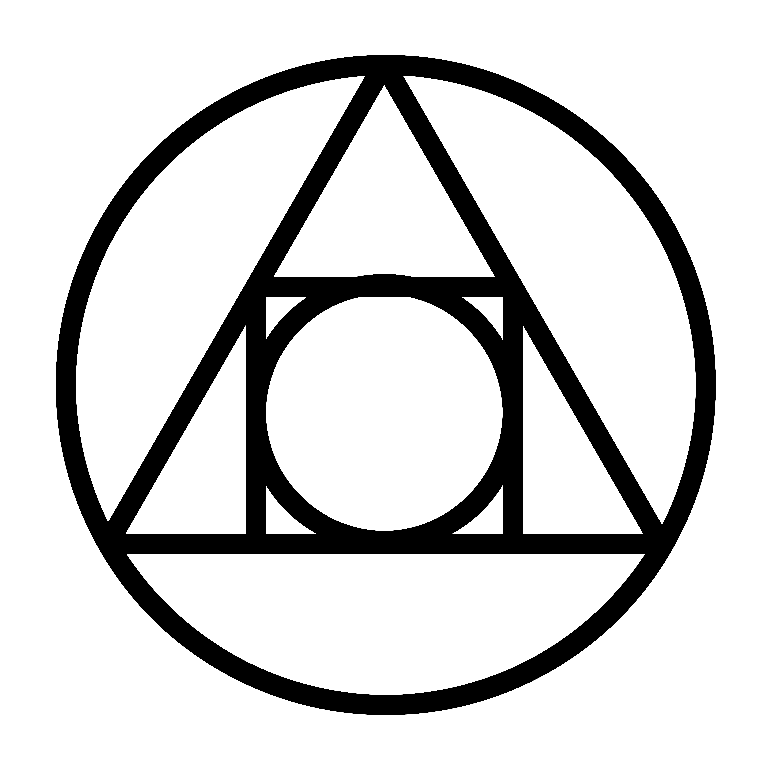Philosopher’s Stone Part Eight: The Triumphal Chariot of Antimony — Basil Valentine and the Medicine of the Philosophers

Philosopher’s Stone Part Eight: The Triumphal Chariot of Antimony — Basil Valentine and the Medicine of the Philosophers
Bibliographic Introduction
The Triumphal Chariot of Antimony is the most famous work attributed to Basil Valentine, the supposed 15th-century Benedictine monk of Erfurt. Whether Basil himself was historical or a pseudonymous invention, the Chariot stands as a landmark of early modern alchemy. The text was printed in Latin in the early 17th century, then translated into English in 1685, accompanied by commentary from Theodore Kirckringius, a physician and adept. This 1685 English edition, enriched with the commentator’s glosses, became the standard vehicle by which Basil’s doctrines spread through Europe.
The Chariot is unusual for its double ambition. It describes antimony as the very subject of the philosophers — the matter in which lies their hidden mercury — while also presenting antimony as a medicine for health, capable of purging the body of corruption and preserving life. Here, alchemy moves fluidly between laboratory and infirmary, tincture and panacea.
Philosophical Mercury in the Chariot
At the core of Basil’s teaching is the conviction that antimony conceals the philosophers’ mercury. The text insists that the work must begin with a despised substance:
“Despise not Antimony, for in it lies hid the treasure of the Wise, if it be prepared by Art.” (Chariot, Bk. I)
Common mercury, he warns, cannot endure fire nor be fixed. Instead, the metallic “spirit” of antimony, rightly purified, becomes the mercury of the sages — a substance both volatile and fixed, mediating extremes. The process hinges on extracting this hidden mercury from crude stibnite (antimony sulfide) and converting it into a crystalline regulus and volatile spirit.
The commentator Kirckringius underlines this: it is not apothecaries’ mercury that avails, but antimony’s internal moisture, a “mercurial principle” that, once separated from its dross, is able to join with gold and other metals.
Medical Uses of Antimony
While Basil affirms that antimony’s mercury can produce the Stone and tinct metals, he is even more insistent on its virtue as medicine. He declares that antimony is a scourge to all corruption in the human body, driving out disease and renewing health.
The Chariot repeatedly describes antimonial preparations as emetics and purgatives:
“It expels what is vicious, it purges the stomach, it drives forth phlegm and choler, it cleanses the bowels.” (Chariot, Bk. II)
The purified glass of antimony, given in controlled doses, is said to purge without violence and restore natural balance. Distilled antimonial wine, or spirit of antimony, becomes a universal medicine, strengthening the vital spirit, preventing putrefaction, and preserving youth.
Kirckringius presses this medical doctrine even further, claiming that antimony is the true “fifth essence” of medicine, incorruptible, penetrating to the roots of disease. In this way, Basil becomes a precursor of iatrochemistry, anticipating Paracelsus, who would later build his medicine on chemically prepared remedies.
Extracting the Method
Basil’s operative instructions, woven through allegory, resolve into a coherent method:
-
Preparation of Antimony: Crude stibnite must be purified by repeated roasting and washing, driving off sulfur and earthy impurities.
-
Regulus of Antimony: Fusion with iron yields a shining metallic regulus, the purified body of antimony.
-
Glass of Antimony: Fusion under higher fire produces a transparent glass, useful for medicinal purges.
-
Mercury of Antimony: By sublimation and distillation, a volatile spirit is drawn out, described as the hidden mercury of the sages.
-
Union with Gold: This mercury is then conjoined with Sol, dissolving and fixing it, producing the tincture.
-
Color Sequence: The matter blackens, whitens, then reddens in the sealed vessel, confirming its progress.
-
Medicine and Tincture: The result, if directed to health, becomes a universal medicine; if projected, a tincture that transmutes.
Evidence of Practice
The Chariot abounds in laboratory detail: the making of regulus, the preparation of glass of antimony, the careful regulation of fire in sublimation, the distillation of sharp spirits. These are not mere allegories but procedures recognizable in early chemistry. Basil, or the compiler under his name, was clearly conversant with metallurgical practice.
At the same time, the text is devotional, casting antimony as a martyr that dies to give life. This fusion of piety and practice is typical of early modern alchemy.
Contribution to the Stone Tradition
The Triumphal Chariot contributes two decisive elements to the tradition:
-
Antimony as Philosophical Mercury: It re-asserts the antimonial path opened by Artephius, giving it full systematic exposition. The true mercury is not common quicksilver but the volatile spirit within antimony.
-
Medical Alchemy: It makes the Stone also a medicine, framing antimony as the universal purgative, the quintessence of health. This bridged the way to Paracelsian iatrochemistry.
Where earlier writers circled around “permanent water” or “middle nature,” Basil locates the key in a specific mineral, antimony, and demonstrates how its purification yields both the matter of transmutation and the medicine of health.
Deciphered Method
Condensed, the Chariot’s prescription is:
-
Roast and wash antimony to remove impurities.
-
Reduce to metallic regulus; fuse to obtain glass of antimony.
-
Distill to draw out the volatile spirit — the true mercury.
-
Conjoin this mercury with gold; observe blackening, whitening, reddening.
-
Fix the tincture, which serves as both universal medicine and metallic transmuter.
Philosophical mercury is thus the volatile spirit of purified antimony, at once metallic and medicinal.
Conclusion
The Triumphal Chariot of Antimony stands as a triumph of spagyric doctrine. It elevates antimony from despised ore to vehicle of the philosophers’ mercury, teaching its purification into regulus, glass, and volatile spirit. More than this, it declares antimony to be the medicine of mankind: purgative, preservative, restorative.
For Basil Valentine, the work of alchemy was not only the tincture of metals but the healing of bodies. Antimony, rightly prepared, became both the Stone of the wise and the medicine of the sick. In this double face — metallic and medical — the Chariot captures the essence of late medieval alchemy, standing at the threshold of modern chemical medicine.
| Author / Text | Philosophical Mercury | Preparation Steps | Union Method | Fire / Heat | Color Signs | Product Claims |
|---|---|---|---|---|---|---|
| Zosimos of Panopolis (c. 300 CE) | “Divine water” in the kerotakis; volatile spirit ascending and descending | Calcination, sublimation, distillation, washing | Circulation in sealed vessel; dissolution and recombination | Gentle, regulated heating; moist fire | Blackening, whitening, reddening | Tincture, purification of metals; spiritual rebirth |
| Emerald Tablet (Arabic/Latin, 9th–12th c.) | “One Thing” mediating heaven and earth; volatile principle implied | None explicit; “separate the subtle from the gross” | Circulation: ascent and descent of the subtle | Not named; implied gentle force | None specified; allegorical “glory of the whole” | Perfection of all things; universal power |
| Turba Philosophorum (12th c., Arabic → Latin) | Permanent water: vinegar/gum/spume of Luna; volatile-fixative solvent | Putrefaction 40 days; washing; imbibition; coagulation | Copper (sometimes with lead/tin) dissolved in permanent water | Gentle fire; sealed vessel; staged regimen | Blackening → Whitening → Reddening → Tyrian purple | Tincture of metals; Stone “not a stone”; invariable color |
| Artephius, Secret Book (12th c.) | Hidden mercury within antimony; combined with gold | Dissolution of Sol/Luna in “living water” (moist fire); putrefaction | Antimony + mercury + gold in one vessel | Gentle, continuous heat (“hen brooding eggs”) | Black → White → Red | Incombustible oil; multiplicative tincture; longevity |
| Pseudo-Geber, Summa Perfectionis (13th c.) | Purified, sublimed, partly fixed quicksilver | Repeated sublimation with salts/vitriols; fixation of volatile | Mercury + purified sulfur joined in vessel | “Convenient fire”: moderate, continuous decoction | Black → White → Red | Philosophers’ Stone (Elixir); projection of metals; medicinal virtues |
| Arnaldus de Villanova, Epistle (late 13th–early 14th c.) | Hidden mercurial humidity within metallic bodies; not common quicksilver | Dissolution, putrefaction | Unite body and hidden mercury in vessel | Gentle, continuous fire | Black → White → Red | Incombustible Stone; tincture of metals |
| Pseudo-Llull, Testamentum (14th c.) | Philosophical water: metallic phlegm; first water of mercury; middle nature uniting extremes | Dissolution in water; decoction; separation of phlegm; imbibition | Union of Sol and argent vive via middle nature | Continuous gentle fire; decoction, filtration | Black → Pale chaff → White → Red | Red powder tincts silver into gold; Stone of projection |
| Pseudo-Llull, Clavicula (14th c.) | Fixed, hot, dry argent vive extracted from Sol and Luna; not vulgar quicksilver | Calcination of Sol/Luna; imbibition; extraction with corrosive menstrual; amalgamation | True mercury unites with vulgar mercury, fixing it | Gentle fire in degrees; staged regimen | Black → Grey → White → Red | Calx viva; infinite multiplication; projection into Sol or Luna |
| Basil Valentine, Triumphal Chariot of Antimony (15th c.) | Volatile spirit of purified antimony; true mercury of sages | Roasting, washing; regulus; glass of antimony; distillation to draw mercury | Mercury of antimony united with Sol | Gentle, regulated sublimation and distillation; sealed vessel | Black → White → Red | Universal medicine; tincture of metals; longevity |

